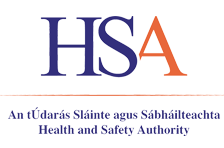Manual Handling in Health and Social care

Manual handling is one of the most commonly reported non-fatal accident trigger in the health and social care sector. In 2023, it accounted for 227 of reported incidents from this sector.
Manual handling injuries in health and social care are as a result of both:
- people moving and handling, and
- the manual handling of inanimate loads.
These injuries can have a significant impact on resources in terms of absenteeism and costs from claims arising from such incidents.
Stresses and strains arising from adopting awkward or static postures when treating patients can also give rise to musculoskeletal disorders (MSDs). Activities such as supporting patient limbs and working in positions with little scope for changing posture for extended periods of time, can result in pain and the risks need to be assessed.
Legislation
The main occupational health and safety legislation applicable to manual handling and people moving and handling includes:
- Safety, Health and Welfare at Work Act 2005.
- Safety, Health and Welfare at Work (General Application) Regulations 2007 (as amended).
The employer must:
- Consider the avoidance of manual handling tasks where possible.
- Carry out a risk assessment on all work tasks which involve manual handling activities.
- Organise tasks to allow the use of mechanical equipment or other means to avoid or reduce the need for the manual handling of loads by employees in the workplace.
- Provide instruction and training to relevant staff.
Please refer to the five step risk assessment model in Managing Ergonomic Risk in the Workplace when assessing inanimate manual handling tasks.
